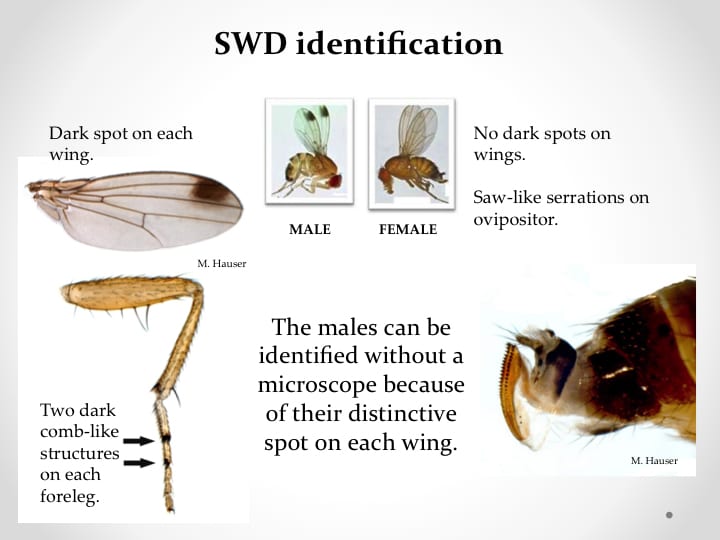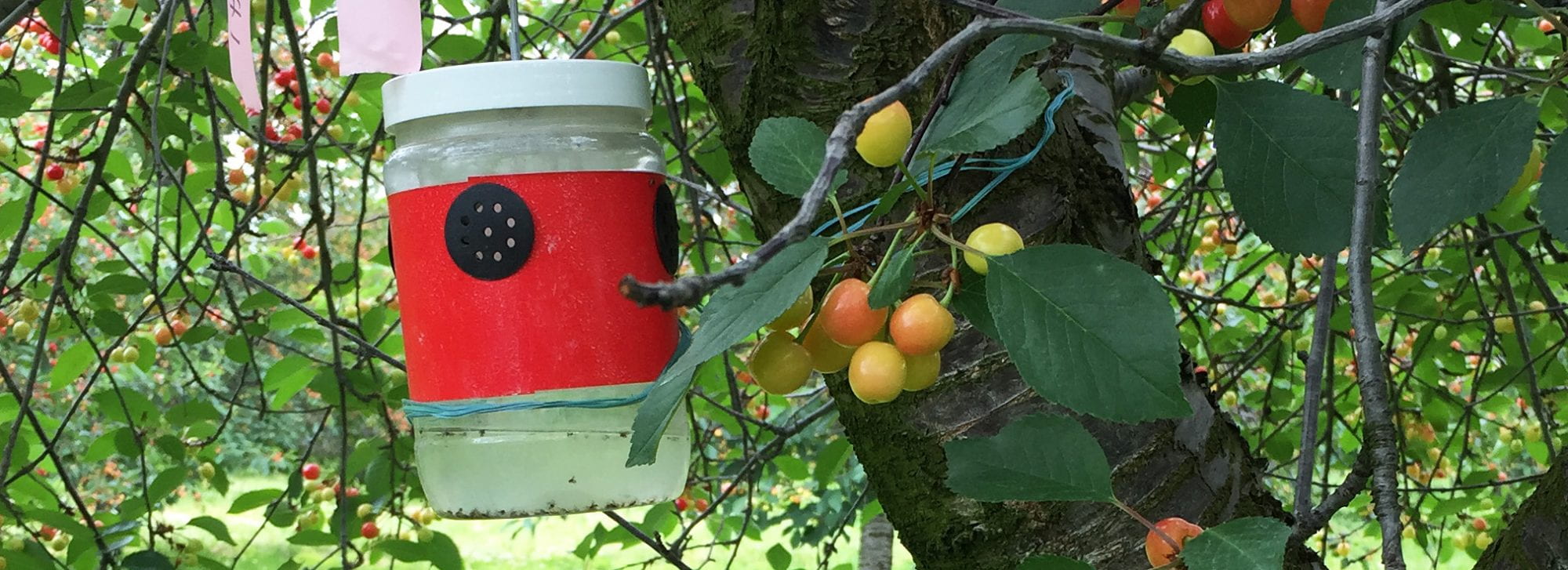Five female and one male SWD were caught in two traps set on the edge of a blueberry planting in Clinton County. The traps were checked on June 15, 2020. Fruit is developing nicely, yet still green. These traps are being monitored by Andy Galimberti and Elisabeth Hodgdon, Eastern NY Commercial Horticulture Program, Cornell Cooperative Extension.
Reports of fruit beginning to change color or develop a blush, especially where exposed to sun, brings up an important point for you. It is time to pay attention to the color stage of your blueberries. When they are fully pink, SWD females can lay eggs in them. This has been ascertained in no-choice tests in laboratories. Your fruit planting might not be a “no-choice” arena for SWD females, but if she needs to lay eggs and your fruit are ripening, they may be at risk.
Strawberries, blueberries, raspberries, cherries (both sweet and tart), plums, blackberries, June berries, etc. – all can be infested by SWD. Read more about SWD Hosts at fruit.cornell.edu/spottedwing/hosts/. A lot depends on the overlap of when the SWD population builds up in your area and when the onset of fruit ripening through harvest occurs. When these two worlds collide, bad things can happen to your fruit crop.

Be prepared. Learn how to monitor SWD. Look just for the males with their characteristic single, gray-black polka dot on the leading edge tip of each wing. (I used to love polka dots…) Baited yellow sticky cards hung in a shady area near your crop of interest will do the trick. Check them and clean them routinely. More on this technique in another post.
Do everything you can, that is feasible on your farm operation, to manage this pest. SWD IPM includes:
- Mowing – to reduce humidity and niches for SWD harborage and to increase sun penetration.
- Weed management – to reduce humidity, alternate fruiting hosts and harborage and to increase sun penetration.
- Pruning – to reduce humidity and to increase sun and spray penetration.
- Monitoring – to know if SWD is present when fruit is ripening.
- Sanitation – to reduce reproduction harborage and overall SWD population.
- Cold storage – to slow or kill any eggs and larvae in harvested fruit.
SWD Management, fruit.cornell.edu/spottedwing/management/ on Cornell Fruit Resources.
Insecticide Quick Guides for NY State are found here:
- For berry crops http://www.hort.cornell.edu/fruit/pdfs/swd/berry-insecticides.pdf
- For stone fruit and grapes http://www.hort.cornell.edu/fruit/pdfs/swd/treefruit-grape-insecticides.pdf
Refresh the page to see the latest versions.
Check out Cornell Fruit Resources Spotted Wing Drosophila, fruit.cornell.edu/spottedwing/.

